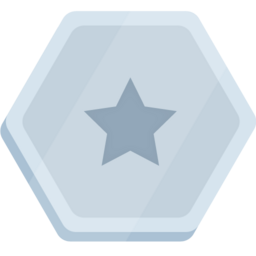Daniele Grotti
Member since 2021
Silver League
4385 points
Member since 2021

This course teaches you how to create an image captioning model by using deep learning. You learn about the different components of an image captioning model, such as the encoder and decoder, and how to train and evaluate your model. By the end of this course, you will be able to create your own image captioning models and use them to generate captions for images
This course introduces you to the Transformer architecture and the Bidirectional Encoder Representations from Transformers (BERT) model. You learn about the main components of the Transformer architecture, such as the self-attention mechanism, and how it is used to build the BERT model. You also learn about the different tasks that BERT can be used for, such as text classification, question answering, and natural language inference.This course is estimated to take approximately 45 minutes to complete.
This course gives you a synopsis of the encoder-decoder architecture, which is a powerful and prevalent machine learning architecture for sequence-to-sequence tasks such as machine translation, text summarization, and question answering. You learn about the main components of the encoder-decoder architecture and how to train and serve these models. In the corresponding lab walkthrough, you’ll code in TensorFlow a simple implementation of the encoder-decoder architecture for poetry generation from the beginning.
This course will introduce you to the attention mechanism, a powerful technique that allows neural networks to focus on specific parts of an input sequence. You will learn how attention works, and how it can be used to improve the performance of a variety of machine learning tasks, including machine translation, text summarization, and question answering. This course is estimated to take approximately 45 minutes to complete.
This course introduces diffusion models, a family of machine learning models that recently showed promise in the image generation space. Diffusion models draw inspiration from physics, specifically thermodynamics. Within the last few years, diffusion models became popular in both research and industry. Diffusion models underpin many state-of-the-art image generation models and tools on Google Cloud. This course introduces you to the theory behind diffusion models and how to train and deploy them on Vertex AI.
This is an introductory level microlearning course aimed at explaining what Generative AI is, how it is used, and how it differs from traditional machine learning methods. It also covers Google Tools to help you develop your own Gen AI apps.
Security is an uncompromising feature of Google Cloud services, and Google Cloud has developed specific tools for ensuring safety and identity across your projects. In this fundamental-level quest, you will get hands-on practice with Google Cloud’s Identity and Access Management (IAM) service, which is the go-to for managing user and virtual machine accounts. You will get experience with network security by provisioning VPCs and VPNs, and learn what tools are available for security threat and data loss protections.
Networking is a principle theme of cloud computing. It’s the underlying structure of Google Cloud, and it’s what connects all your resources and services to one another. This course will cover essential Google Cloud networking services and will give you hands-on practice with specialized tools for developing mature networks. From learning the ins-and-outs of VPCs, to creating enterprise-grade load balancers, Automate Deployment and Manage Traffic on a Google Cloud Network will give you the practical experience needed so you can start building robust networks right away.
If you are a novice cloud developer looking for hands-on practice beyond Google Cloud Essentials, this course is for you. You will get practical experience through labs that dive into Cloud Storage and other key application services like Monitoring and Cloud Functions. You will develop valuable skills that are applicable to any Google Cloud initiative. 1-minute videos walk you through key concepts for these labs.
In this introductory-level course, you get hands-on practice with the Google Cloud’s fundamental tools and services. Optional videos are provided to provide more context and review for the concepts covered in the labs. Google Cloud Essentials is a recommendeded first course for the Google Cloud learner - you can come in with little or no prior cloud knowledge, and come out with practical experience that you can apply to your first Google Cloud project. From writing Cloud Shell commands and deploying your first virtual machine, to running applications on Kubernetes Engine or with load balancing, Google Cloud Essentials is a prime introduction to the platform’s basic features.